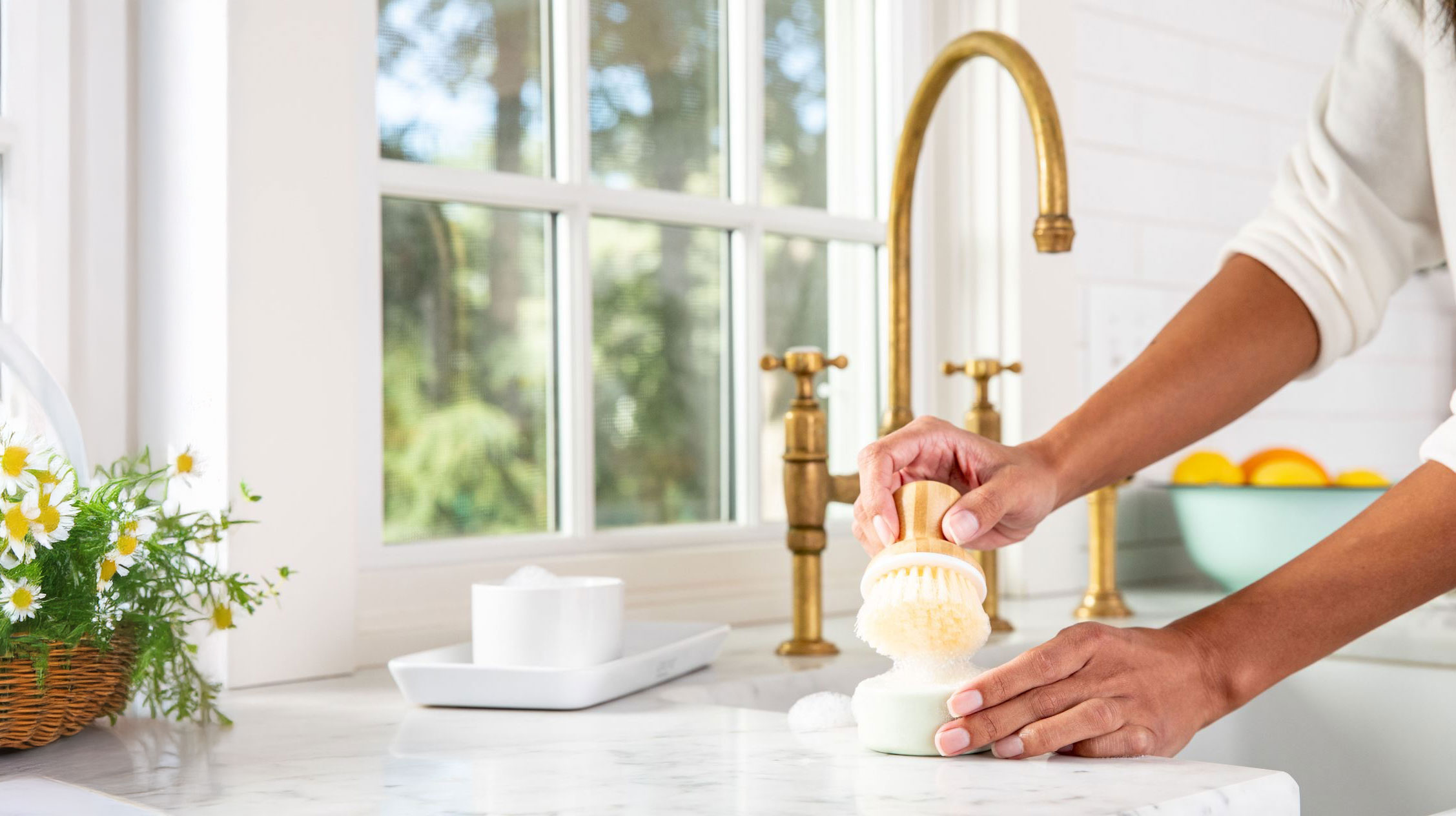Natural brass changes color over time due to the oxidation of its surface. This process is called patina and can give brass a beautiful, antique look. If you want to preserve the original brass color, clean and maintain your faucet regularly.
Oxygen makes contact with the brass surface, leading to a chemical reaction. This forms a thin layer of copper oxide on the surface, resulting in the characteristic tarnish or patina that develops over time. While oxidized brass may not always look as nice as its original state, this oxidation process allows the brass to create a protective coating that prevents further corrosion or damage.
Several factors contribute to the tarnishing of brass. Environmental conditions, such as high humidity and exposure to pollutants, accelerate the oxidation process. Additionally, direct contact with substances like oils, acids, or sulfur-containing compounds, often present in our everyday surroundings, can expedite tarnish formation. Even the natural oils from our skin, when transferred onto brass surfaces, can contribute to the darkening effect.
Oxidized brass can take on various appearances, depending on the extent of oxidation and environmental factors. Here are some common characteristics:
• Tarnish: Initially, brass develops a dark layer called tarnish. This can range from black to brown or green. Tarnish often forms unevenly, creating interesting patterns on the surface.
• Patina: Over time, the tarnish can harden and become more stable. Some people intentionally leave this patina on brass items for decorative purposes. It adds character and depth to the metal.
• Color Shift: The original golden-yellow hue of brass gradually changes. It may darken, becoming more subdued, or take on blue or green tones due to the copper oxide layer.
• Texture: Oxidized brass feels different from polished brass. It’s less smooth and may have a slightly rough or gritty texture.
Remember that the appearance of oxidized brass varies based on factors like humidity, exposure to chemicals, and handling. Regular cleaning may preserve its original luster, but the tarnished and aged appearance of natural brass is not a defect and is not covered by the warranty. This is more an effect of this material and its appearance depends on how often and in what way you maintain it.

1.Use a Microfiber Cloth
Start cleaning brass with hot soapy water and a microfiber cleaning cloth. Microfiber cloths comprise many tiny fibers that have a knack for capturing and removing small particles. They’re also incredibly soft and gentle, so they won’t scratch your brass piece. Dip the cloth in the water and give all surfaces a once-over. After that, use a clean toothbrush to tackle any crevices. Rinse with warm water and dry thoroughly.
2. With Ketchup
For tougher brass stains, try ketchup. Ketchup contains acidic ingredients, like tomatoes and vinegar, which react with brass tarnish and help to dissolve it. You can also use tomato paste and tomato sauce for the same reason. Simply rub a thin coat of ketchup on the brass, let it sit for an hour or so to work its magic, and then clean the piece with a microfiber cloth and hot soapy water.
3. With a Vinegar, Salt, and Flour Paste
Another way to clean brass is to make a paste of ½ teaspoon salt, ½ teaspoon flour, and ½ cup white vinegar. Vinegar’s acidity works to dissolve tarnish, while the salt’s gentle abrasive texture can remove tough stains. Meanwhile, the flour holds it all together to form a paste that’s easy to work with. Simply apply the paste to the brass and let it sit for up to an hour. Rinse it with warm water and buff dry with a microfiber cloth.
4. With Lemon Juice
Another effective, natural cleaning combination for brass is salt and lemon. Lemon’s acidity combined with salt’s gentle abrasive texture work to dissolve and then scrub away dirt and tarnish. Here’s how to do it:
5. Scrub With Toothpaste
Toothpaste contains mild abrasives, like baking soda or hydrated silica, which can help break down tough brass stains. For this method, all you have to do is squirt a small amount of toothpaste onto a microfiber cloth and then wipe the cloth along all surfaces. You can follow up with a toothbrush to scrub small crevices, then rinse with warm soapy water.
6. With Lemon and Baking Soda or Cream of Tartar
Like toothpaste, baking soda and cream of tartar powder are mild abrasives that can help tackle stubborn brass stains. You can use either one for this method. To start, measure 1 teaspoon of either baking soda or cream of tartar and combine it with 2 teaspoons of lemon juice. Mix it up until it forms a paste. Use a microfiber cloth to apply the paste on all surfaces before rinsing with warm soapy water.
Q: Does brass rust?
Q: How do you prevent brass from tarnishing? There are a few ways to prevent brass from tarnishing and maintain its luster:









